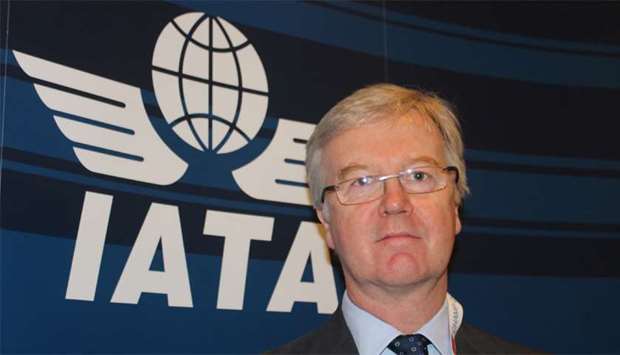Commercial airlines are expected to take delivery of some 1,683 new aircraft this year, a substantial investment by the industry, though less-than expected earlier in the year, according to IATA’s chief economist Brian Pearce.
The trend improvement in average returns (ROIC) has given the industry the confidence to invest on this scale, he said.
Sustained high fuel costs had also made it economic to retire older aircraft at a higher rate, but that effect has weakened. Around half of this year’s deliveries will replace existing fleet, making a significant contribution to increasing fleet fuel efficiency, Pearce said at the ‘IATA Global Media Day’ here.
The fleet is forecast to increase by over 1,000 aircraft to end next year at over 30,000 aircraft; expansion continues as markets have expanded strongly and the outlook remains positive. The average size of aircraft in the fleet is continuing to rise slowly.
So by the end of 2018, Pearce noted there will be around 4.4mn available seats. These seats are also being used more intensively, which is critical for profitability in a capital intensive industry – and it also reduces environmental impact.
Passenger load factors are expected to rise from 2017 levels to 81.4% on average in 2018. Aircraft are also being flown more intensively. The number of scheduled aircraft departures is forecast to exceed more than 38mn next year. That’s an average of 73 aircraft departing each minute of 2017.
On capital provisions, IATA said equity investors in the industry have typically seen their capital shrink.
But next year, IATA forecasts the industry to generate a return on invested capital (ROIC) of 9.4%, which does, for the fourth consecutive year, adequately reward equity owners.
On invested capital of almost $600bn, the industry is forecast to generate $11.5bn of value for investors next year. The $38.4bn net profit, while exceptional for the airline industry, is only a little higher than a ‘normal’ return for risking their capital.
Moreover, above-WACC returns have only started to be generated outside North America in the past year or two and are still not widespread across all regions.
The decline in airline margins and ROIC in 2018 is being driven by a rise in breakeven load factors, as unit costs are now rising, offset partly by a rise in achieved load factors, as capacity slows more than demand growth.
Nevertheless, the level of profitability is still the fourth highest on record; a soft-landing brought about by changes to industry structure and behaviour, with much more focus on generating an adequate ROIC.




